Request a Catalog
The Meaning of True Heroes
Heroes
By: Richard E. Nygaard, SSGT USMC 1953-1963
Sgt. Grit, I have once again finished reading American Courage. The discussion about Jihad Johnny could, if one cared, give one pause. However, I would like to say to my fellow Marines, do not talk to me of the likes of Jihad Johnny, for I have known many real heroes and walked the hallowed ground on which they fought and died.
I am an Immediate Past Commander of my VFW Post, Currently its Adjutant and Quartermaster and the Adjutant for the Marine Corps League in my little Oregon Town. In my Post is a Marine from the 2nd Bn. 5th Marines in Viet Nam who is the sole survivor of his platoon and a member of the Order of the Purple Heart. Other Marines in my Post are Korean and WWII heroes who also are members of the Order of the Purple heart. Even more are Army veterans who are members of the order of the purple heart. I have one hero on my post who carries three purple hearts and who made the beach at Normandy in WWII. He and two other colleagues and members of the Order of the Purple Heart and of my Post were all in the same outfit when they went to Africa in WWII. Their unit was badly mauled by the Germans, and General Patton was called upon to come in rebuild their Division and make them functional again. But I have met many heroes both in service and out.
Unlike many youth today, who seem not to know what a hero really is, I did not have to go far to find my heroes when I was young. They were all around me. They were the policemen, the firemen and others who were dedicated to protecting all of us and maintaining civility in our communities. They were my father, my uncles, my neighbors who returned after WWII to take up their jobs they left to defeat our enemies and preserve our country and our freedoms. And they were the druggist who did not return because he was killed by machine gun fire from a Japanese plane attacking his ship. I remember that day well, the entire town was in shock and mourning. He was a hero to an entire town. And shortly thereafter, as a child, our entire school turned out to watch a demonstration by two Navy fighter planes who buzzed our school in honor of all the war savings stamps we had collected and turned over to the Government. Those pilots were all our heroes. There was no lack of heroes during and after WWII, and in fact, there never ever has been a lack of heroes no matter what one reads or hears in the media.
My ten years in the United States Marine Corps brought me to Korea right after the shooting stopped. But I met many who were in the Frozen Chosin, I met many who made the Inchon landing. I was privileged to go ashore at Inchon with a few who had made the original Inchon landing and I met and talked with Corsair pilots several of whom were Enlisted Marine Pilots who bombed and strafed the Island of Wol Mi Do overlooking the harbor at Inchon and many Marines who were on the line when the shooting stopped. The War was still on technically when I got there and still is even today. But even though I heard a few shots fired, I am sure most were never fired my way. I was also sent to Japan and served there for another year of my career where I met many sailors who were the were on the receiving end of Kamikaze attacks just before Japan surrendered. I met and served with many who were actually fighting on the Island hopping campaigns. I even visited Iwo Jima, and walked those Hallowed grounds. I say hallowed because of the 5,000 plus Marines killed there including John Basilone. I also have a few Marines in my Post that also stormed ashore at IWO Jima, and a couple more that were on Guadalcanal.
And of course you all know my friend Rusty whom you all honored with your many e-mails and letters. Rusty also made that landing at IWO Jima. After some research and history of that battle, I concluded that I had even had the honor and privilege of seeing that very same pillbox just up from that black sand beach that ran so red with Marine blood that John (Manila John) Basilone organized an assault on and destroyed with the help of some Marine sharpshooters, machine gunners and satchel charge throwers. I saw the approximate area and walked on the very same ground that John Basilone was walking on when he was killed by Japanese mortar fire. I was amazed at the fact that the pillbox was tilted at an angle by 16 inch guns and bombs from planes but when Basilone and his Marines assaulted it was still functional. It still had the metal doors that would drop over the openings to stop shrapnel and small arms fire and which the Japanese would then open to fire back. When I saw it, the metal doors had been blown off and the cannon inside was still there a silent but functional looking cannon with a short barrel and what looked like a 5 inch opening with incredibly intact lands and grooves. The only inhabitants when I was there though were literally thousands of the largest cock roaches I ever saw (in our South they are called palmetto bugs). I was indeed privileged to walk on the same ground that many heroes of that battle trod in their victory over Japan.
I climbed Mount Suribachi and gazed out over the water on all sides but especially at the incredible view of both beaches on both sides of the Island. I could see why they said the mountain was a machine gunners' paradise. I stood on the very ground where our Marines raised the flag and later replaced it with a larger flag. I looked for but did not see any caves because the entire mountain was filled with dynamited and sealed caves. We were forbidden from trying to enter any if we did find them. And I personally pulled liberty and drank a few beers with marines that were in the flame tanks at the foot of Suribachi and which can only be seen now in combat footage from that era. Incredibly, one only had to look at the ground to see shrapnel from the 16 inch Naval guns, from the bombs, grenades, and spent bullets. One could not walk a foot virtually anywhere on the island without seeing spent rounds, fuse mechanisms from grenades and mines. Artifacts of battle were found from time to time all over the Island. In those days Marines did use the Island for landing practice and did so up until the USA returned it to the control of the Japanese who promptly declared it a national monument during the 1960s. Today one can see monuments to both Japanese and American Warriors but little in the way of artifacts of that battle.
I have visited and walked the ground that my relatives fought in WWII to take back from the Japanese. Indeed, I have been prepared as a Marine over and over again to answer the call if I was ever needed by my country during my ten years as a Marine. I was prepared and had received my shots ready to go into Cuba if need be when President Kennedy stopped the Russians from putting offensive nuclear missiles in that country in 1962. Like my fellow Marines, I was also hearing rumors of another impending war, in a place called Viet Nam. I did not go to Viet Nam, my time was up in the Corps and I had other goals and objectives to complete.
Yes Sgt. Grit, I have walked the hallowed ground of our Marines, our Soldiers, our Sailors and Airmen in Korea, and IWO Jima and Saipan, Eniwetok, Tinian and a few other battlefields where our brave men have fought and died. And while I witnessed the battlefields after the battle and could see the results of those battles in the scarred pillboxes, the implements of war and the by-products of expended ordnance on those grounds, I also witnessed something that they all have in common.
That is the silence in which you observe these hallowed grounds, hulls of ships and waters is so deafening that you can, if you will listen, hear the sounds of battle, and the cries of the dying. And you can hear the voices of those left behind calling to you to come home… Really, if you will listen as I have you will never ever forget those sounds. From the site of the battlefield the little Bighorn to the deck of the Battleship Arizona (it is especially powerful there) in Hawaii and the punchbowl and on to IWO Jima and Korea and all in between, you can see it, you can taste it in the air and you can hear it. The older I become, the louder it is in my ears. I used to think I was hearing things and that I was the only one. But ask anyone that has visited the Battleship Arizona. They will tell you the same.
And yet, I do not feel that I deserve to hear these cries, these voices of the fallen heroes. I have not spilled nor have I had my blood spilled as they have. Some would say I am in need of treatment for what I know and feel, but I know many that have those same feelings. Millions for example visit the Alamo and the Battleship Arizona every year. But next time, you go there, stop, look, listen. You too will hear the voices and feel the feeling and you will swear to it as chills hit your bones. You will then have experienced what I and countless others have. One curious thing I have noted however. I have never ever had those same feelings or heard these sounds at monuments built in honor of those brave souls. Not even the Marine Corps Memorial in Washington, D. C.. It is a wonderful and beautiful memorial and I used to live in its shadow right across the road on the tenth floor of Arlington Towers with a perfect view of the flag raising daily. Seeing it gives me pause, and while I am awed by it, I do not hear the voices because I finally realized that the men that are depicted there are not really there as they are in the Alamo, Little Big Horn, Frozen Chosin, IWO Jima, Saipan, and in the Arizona. I strongly believe if only the vast majority of our population could only hear those voices, walk on those hallowed grounds and decks and really observe, we would not be hearing bleeding hearts trying to seek compassion for our enemies.
I find that many of our own citizens and especially our August Senatorial Body is in drastic need of overhaul of their thought processes (I like to call it putting the excitement back in their day) for their monumental failure to be that truly deliberative body we all have been taught that it is. Instead they have become like little school kids who are going to try to punish each other just because they lost the election and have not learned how to get over it. It is in that very same spirit that they send our troops off to protect their rights to be like they are, while trying to make the President, whose job it is to be in charge, look like he cannot do it right. Wrong. This Congress needs to take a lesson from our President on how a real war should be fought. More importantly, they need to consider the consequences of depending on our citizens to fight their battles. Most do so willingly and ask little in return. They deserve better treatment for their sacrifices. Semper Fi Sgt Grit, thanks for letting me get back on my soap box.
PS for that SSgt that thought he was my platoon Sgt in Boot Camp from January 1953 until April (Yes we had to do 16 weeks in those days) I was in Platoon 7. I did go to Camp Mathews, I did ride in the Cattle Cars and I loved every dusty grimy exciting minute of it.


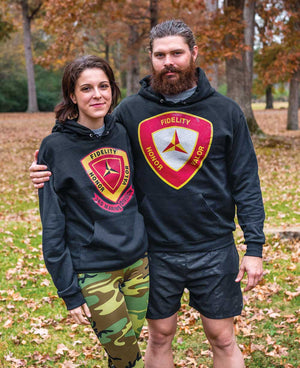
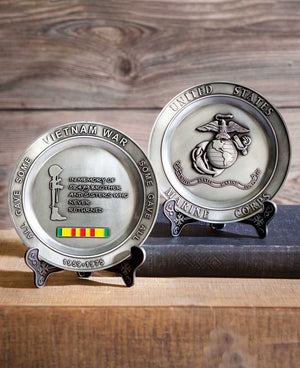
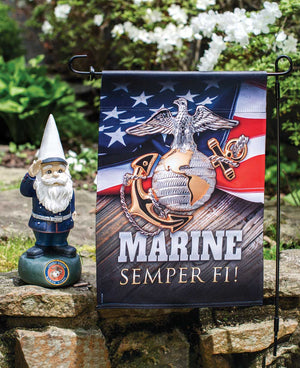
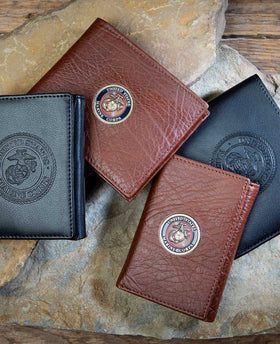
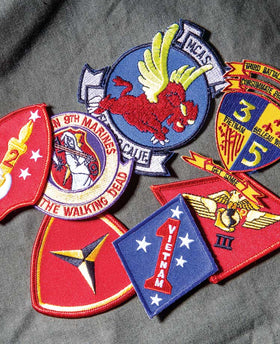
Leave a comment